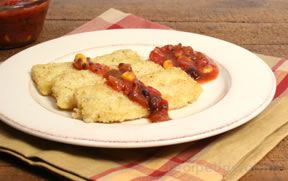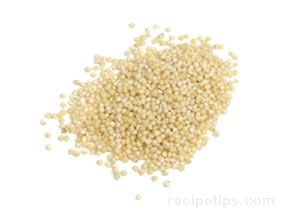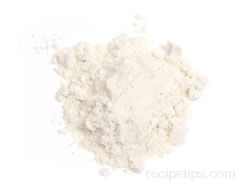Similar Content to: Milano Salami

The numerous varieties of millet are cultivated in different areas of the world based on the type of climate in the area. Some varieties favor tropical locations, while other varieties are able to withstand drought. Millet may remain dormant for an extended period and is then able to quickly sprout with the first rainfall, which is one reason why it is such an important food crop in some of the hot, arid nations of Africa. Other varieties thrive in semi-arid, but cool climates (such as the northern Great Plains of the United States and southern Plains of Canada) where the growing season is shorter, allowing a millet crop to be planted as late as early summer and still be ready for harvesting in early fall.
Some of the varieties of millet include foxtail, which is most often used for birdseed or for brewing beer (especially in Russia), Pearl, which is primarily used in India as a food source, and Proso, which is the variety most widely available in the United States for human consumption and for various animal feeds. A red colored variety is most often found in Eastern Europe or Asia where it is known as finger millet, also referred to as Bajra, Kel-varagu, Nacher, or Ragi. Another variety found mainly in Europe, Africa, and Asia is light tan in color and more cylindrical in shape and is known as Bulrush millet.
Millet has a mild sweetness and crunchy texture and is eaten as a cereal, a side dish, polenta, and as an addition to soups and stews. Millet expands significantly when cooked in a small quantity of water, resulting in a light and dry texture. When more water is used, it develops a thick, mushy texture, much like mashed potatoes, which makes it an excellent side dish. The seeds are especially good if they are toasted before they are cooked in liquid. Millet seeds can be ground into flour, but since millet is gluten free, it must be combined with high-gluten flour when used in yeast breads.
Millet is an excellent source of iron and magnesium and it is also high in calcium, phosphorous, manganese, zinc, and B vitamins. It has the highest iron content of any grain except amaranth and quinoa. The natural alkalinity of millet makes it easily digestible, so it is very beneficial for people with ulcers and digestive problems. It is believed to be one of the least allergenic of all grains.
Millet can become rancid quickly if it is not stored properly, however it will keep for several months if stored in an airtight container in a cool, dry location. It will keep longer if stored in the refrigerator. Millet can be purchased at natural food stores and mail order suppliers. The grain and the flour are also popular items in Indian, African, and Korean markets.









